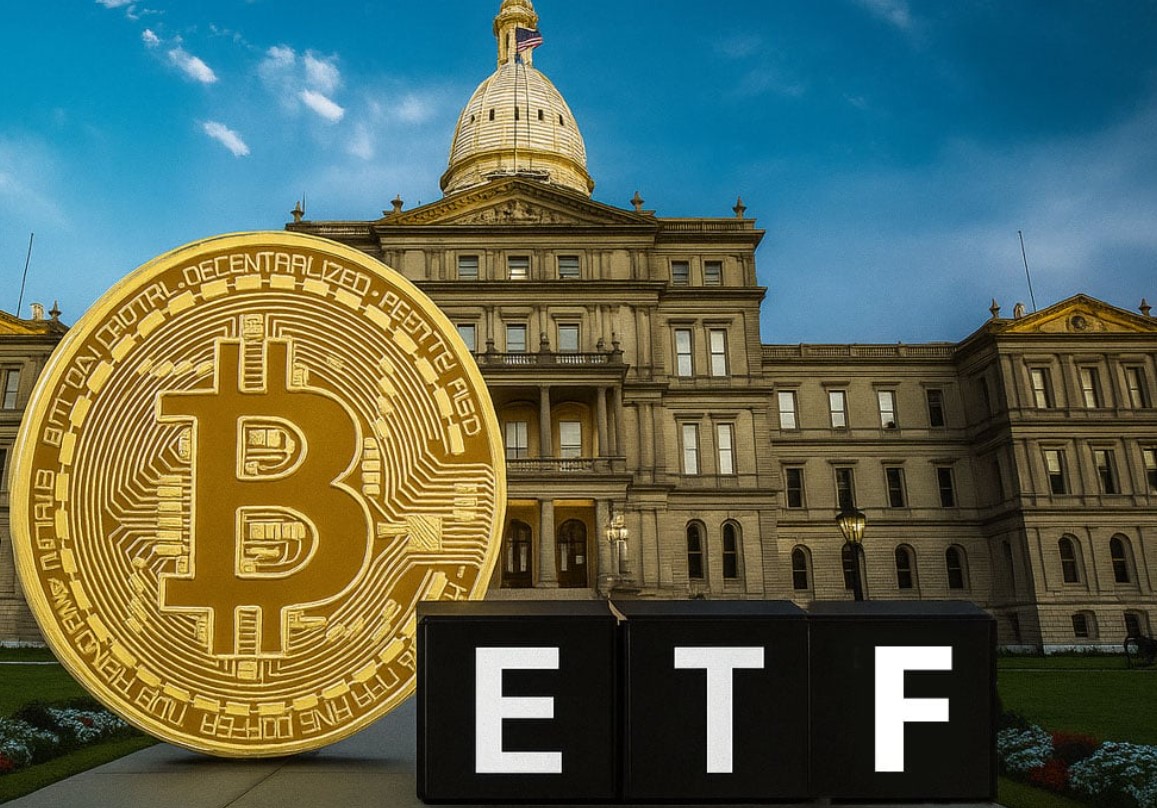Michigan’s largest state retirement system has sharply increased its bet on Bitcoin, tripling its stake in the ARK 21Shares Bitcoin ETF (ARKB) during the second quarter. The new SEC filing shows the fund now holds 300,000 shares worth $11.4 million—up from just 100,000 shares in March.
A Bigger Footprint in Digital Assets
It’s not just a one-off play.
The State of Michigan Retirement System now has more than $25 million tied up in crypto-linked products.
That’s thanks to a steady position in the Grayscale Ethereum Trust (ETHE)—460,000 shares valued at roughly $13.6 million—that’s been untouched since September last year.
For a fund with $19.3 billion in assets under management, these numbers look small at first glance. But in the world of pension funds, a 0.1% allocation to a volatile asset class like crypto is far from trivial.
Some analysts see this as part of a slow but deliberate move toward integrating Bitcoin and Ethereum into mainstream institutional portfolios.

Not Alone in the Shift
They’re in good company.
The State of Wisconsin Investment Board has gone even bigger—holding more than 6 million shares of BlackRock’s iShares Bitcoin Trust (IBIT). That’s about $387.3 million at current prices.
It’s a signal that state-managed money is quietly stepping further into crypto waters. These aren’t speculative traders—they’re pension fund managers bound by strict guidelines, investing for decades ahead.
And yet, here they are, putting public retirees’ money into digital assets.
Why the Interest is Growing
This isn’t just about chasing headlines.
For some funds, Bitcoin’s risk-return metrics are starting to look more appealing.
The Sharpe ratio—a way to measure returns relative to volatility—has improved in recent years for Bitcoin compared to some traditional asset classes.
Managers say the idea is to add an asset that behaves differently from stocks and bonds, potentially smoothing portfolio performance over the long haul.
Of course, “different” also means unpredictable. Which is why allocations stay tiny, almost like dipping a toe rather than jumping in.
Balancing the Risks
Crypto isn’t exactly known for stability.
Michigan’s 0.1% exposure is a hedge, not a headline bet.
Even so, it’s meaningful in the context of state pensions, where every percentage point of risk is scrutinized.
There’s also the political dimension—public funds investing in crypto can face criticism if the market turns south. That’s part of why moves are incremental.
It’s a dance between innovation and caution.
ETF Flows Tell Another Story
While Michigan was buying, not all investors were feeling as optimistic.
Bitcoin ETFs saw four straight days of outflows recently, totaling $1.4 billion. ARKB itself had a minor outflow of $5.1 million last Friday.
Yet, compared to larger outflows from other funds, that’s small.
Some see this as a sign that retail and short-term traders are pulling back, while long-term institutional players keep adding.
It’s a tug-of-war between profit-taking and conviction.
The Forecast That’s Turning Heads
Standard Chartered isn’t shy about its view.
The bank says Bitcoin could hit $200,000 by the end of 2025.
And it sees pension funds playing a central role in that climb.
They expect inflows from “long-only” funds—managers who buy and hold—to beat 2024 levels.
That would push more retirement money into digital assets, increasing both market depth and legitimacy.
Of course, price forecasts are guesses, but it’s a bold one that’s getting attention.
What Could Happen Next
Some possibilities are already being discussed in investment circles:
More state retirement funds may add small crypto allocations over the next year.
ETF product variety will grow, giving institutions more ways to gain exposure.
Regulatory clarity could reduce hesitation from conservative managers.
The big unknown is whether Bitcoin’s price cooperates. If it rallies, allocations could inch higher. If it slumps, crypto might stay a niche corner of pension portfolios for years.



















